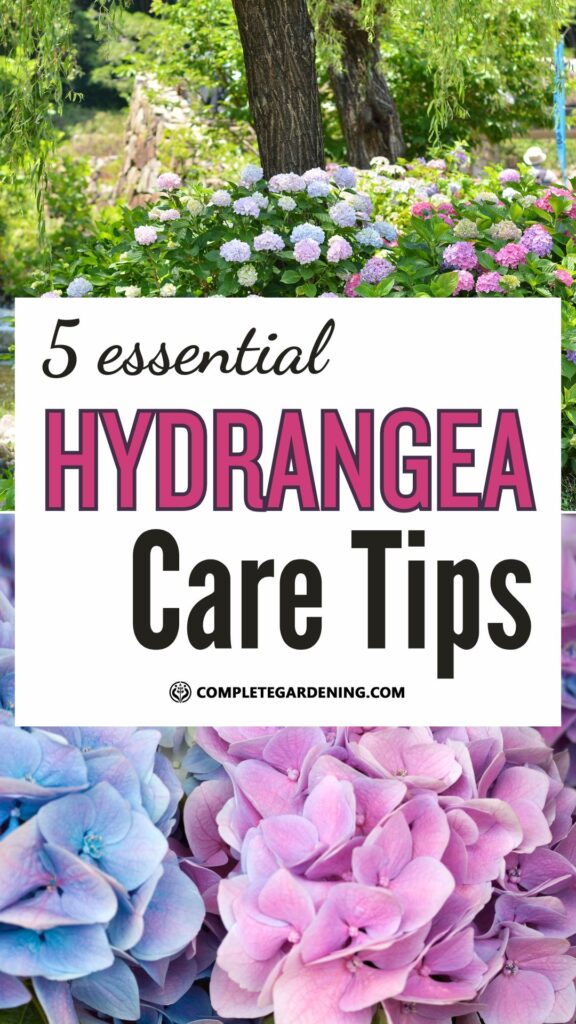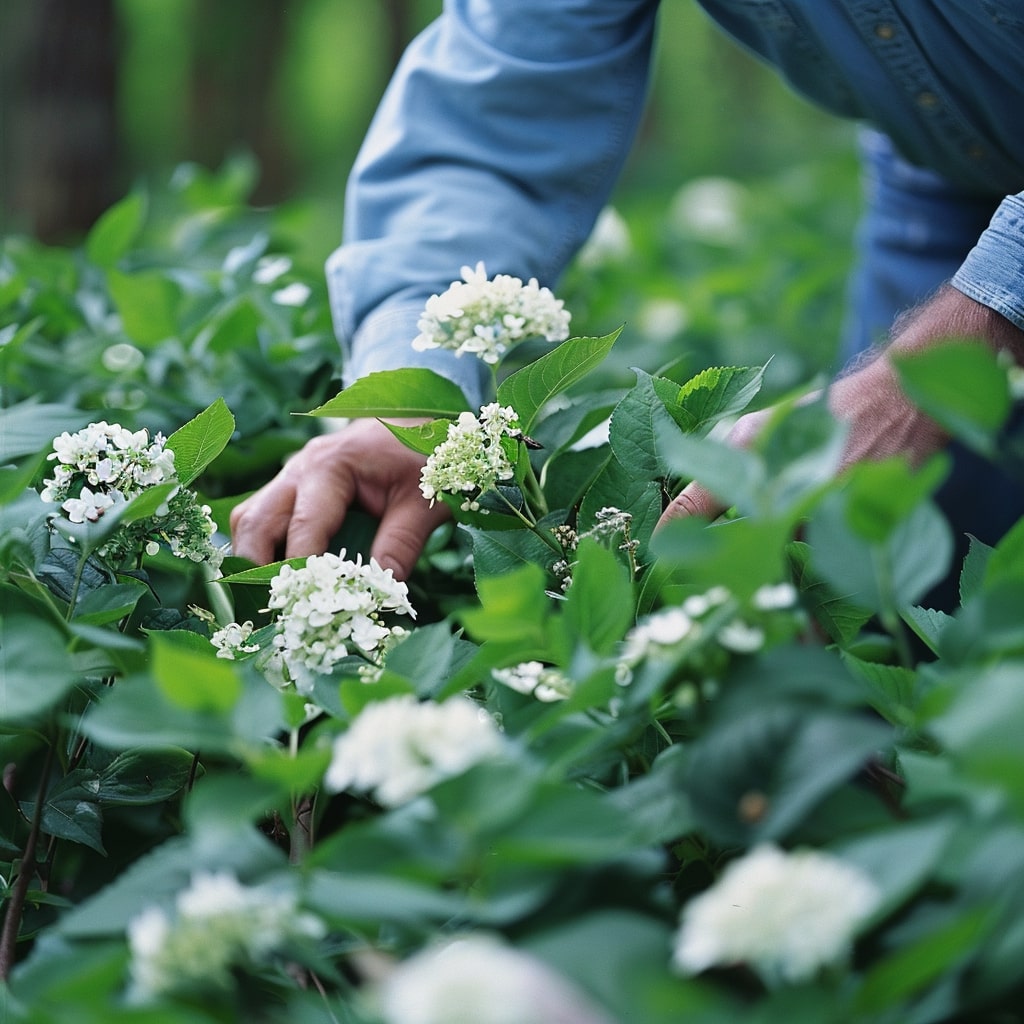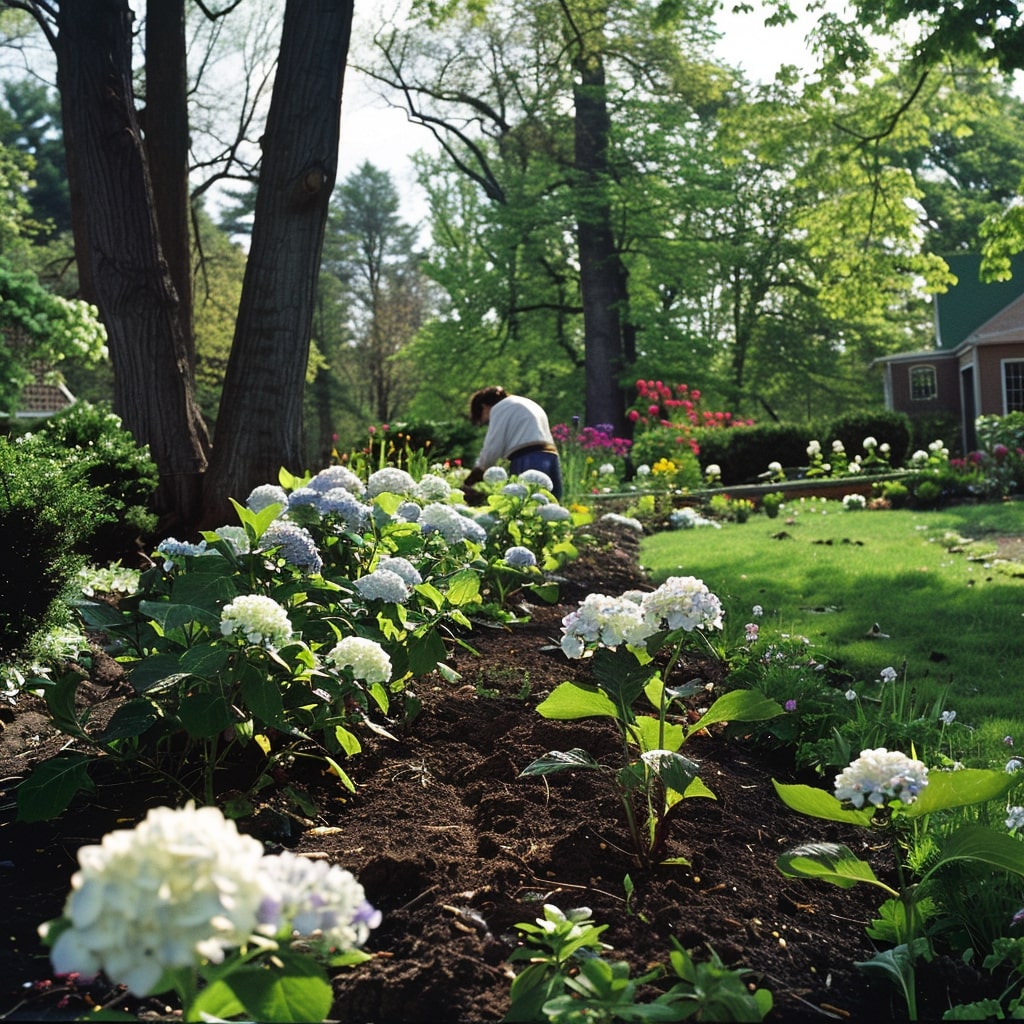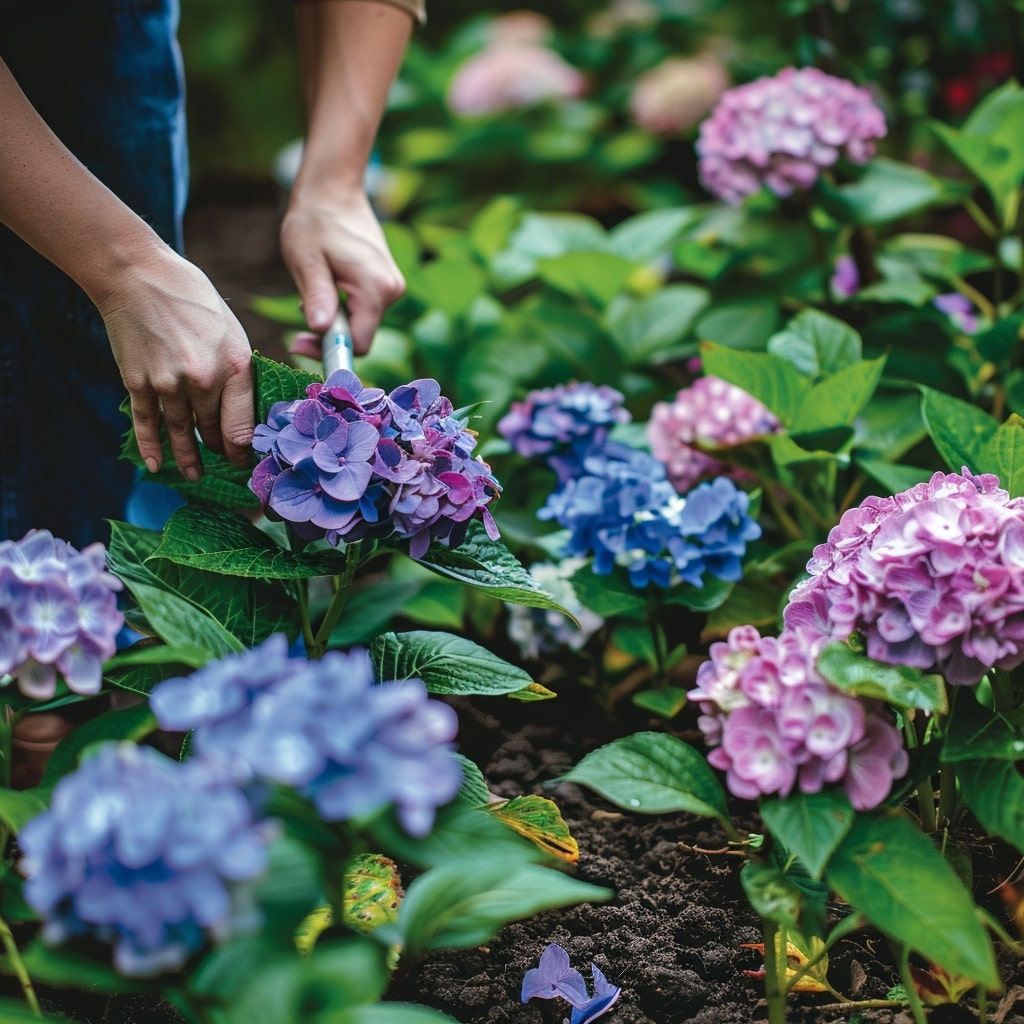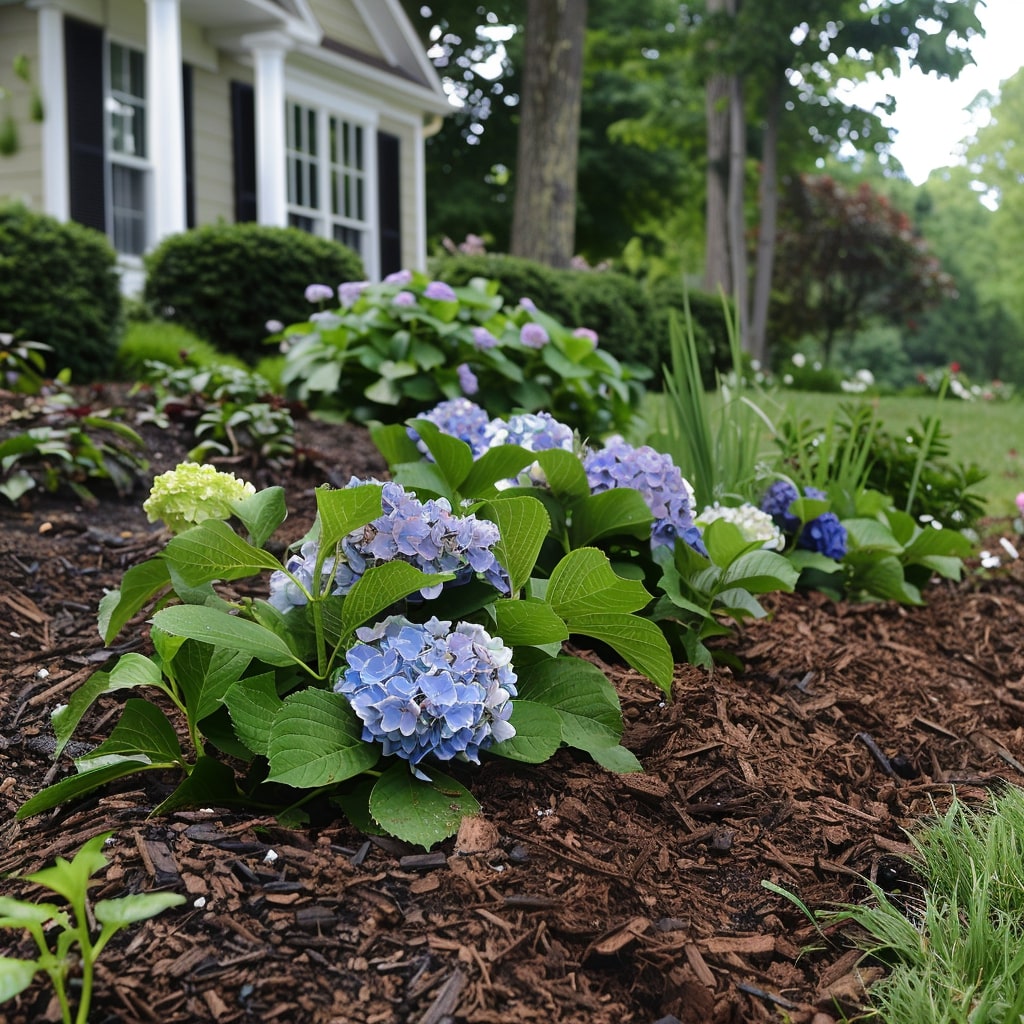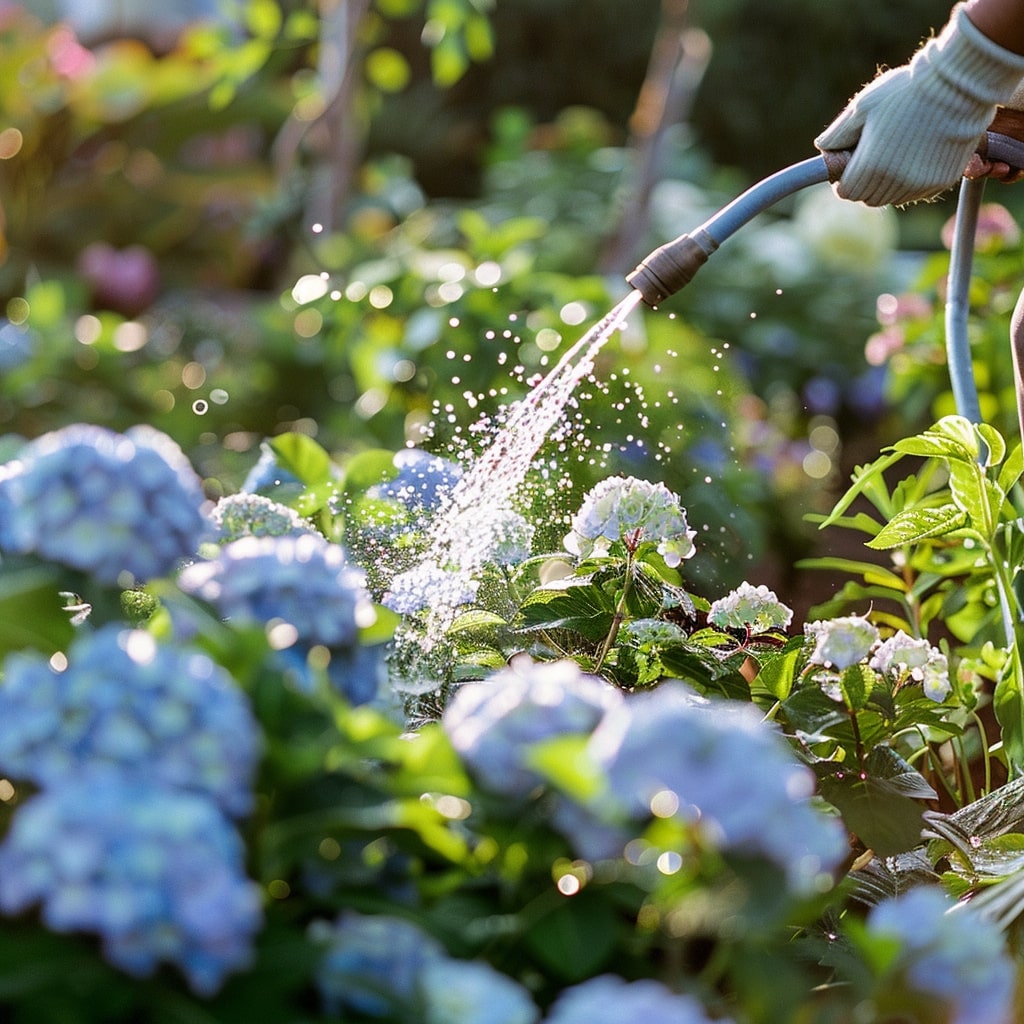As spring emerges, gardeners eagerly await the stunning hydrangea blooms that can transform any garden into a vibrant paradise. These captivating shrubs, known for their lush, colorful flowers, can steal the show.
However, achieving such a breathtaking display requires more than just admiration. Dive into these five essential care tips to ensure your hydrangeas not only survive but thrive, turning your garden into a summer spectacle.
1. Prune with Precision
Understanding when and how to prune your hydrangeas is crucial. There are two main types of hydrangeas: those that bloom on old wood and those that bloom on new wood.
Old Wood Hydrangeas
These include French hydrangeas (Hydrangea macrophylla), Oak-leaf hydrangea (H. quercifolia), and Climbing hydrangea (H. petiolaris). They produce flowers on the previous year’s growth.
Lightly prune these in early spring by deadheading old blooms and thinning out dead or unproductive branches. Avoid heavy pruning to prevent cutting off future blooms.
New Wood Hydrangeas
These include Smooth hydrangea (H. arborescens) and Panicle hydrangea (H. paniculata). They bloom on the current year’s growth.
These can be pruned more aggressively in early spring, cutting back to the desired height to encourage robust growth and abundant flowers.
2. Reevaluate Plant Placement
Spring is an excellent time to assess whether your hydrangeas are in their optimal locations.
Although fall is traditionally recommended for transplanting, moving them in early spring before new growth begins can also be beneficial if they are struggling.
Choose a spot with the right balance of sun and shade, ensuring the soil is well-drained yet consistently moist.
3. Feed with Compost
Instead of relying on chemical fertilizers, enrich your hydrangeas with a generous layer of compost in early spring. Spread it around the base of the plant, extending out to the drip line.
Compost not only provides essential nutrients but also improves soil structure, promoting healthier growth and blooms.
Apply a second layer of compost in midsummer to support continuous blooming and prepare the plants for the next season.
4. Mulch for Moisture and Health
Mulching is a critical step in hydrangea care. Apply a 2-3 inch layer of mulch, such as pine needles or bark, around the base of the plants. Mulch helps retain moisture, suppress weeds, and maintain a stable soil temperature.
For acid-loving hydrangeas like French hydrangeas, using pine-based mulch can also help maintain the desired soil pH for vibrant blue or purple blooms.
5. Adjust Soil pH for Desired Bloom Colors
For hydrangeas like Hydrangea macrophylla and Hydrangea serrata, soil pH affects flower color. To achieve blue flowers, lower the soil pH to make it more acidic by adding aluminum sulfate or organic materials like coffee grounds and pine needles.
For pink blooms, raise the soil pH to make it more alkaline by incorporating lime. Start these adjustments in early spring to give the soil time to react and influence the summer blooms.
Bonus Tip: Water Wisely
Hydrangeas need consistent moisture, especially during dry spells. Water deeply at the base of the plant rather than overhead to prevent fungal diseases.
Early morning watering is best to reduce evaporation and allow the foliage to dry during the day.
By following these springtime care tips, your hydrangeas will reward you with lush, vibrant blooms that enhance your garden’s beauty all summer long. Happy gardening!

